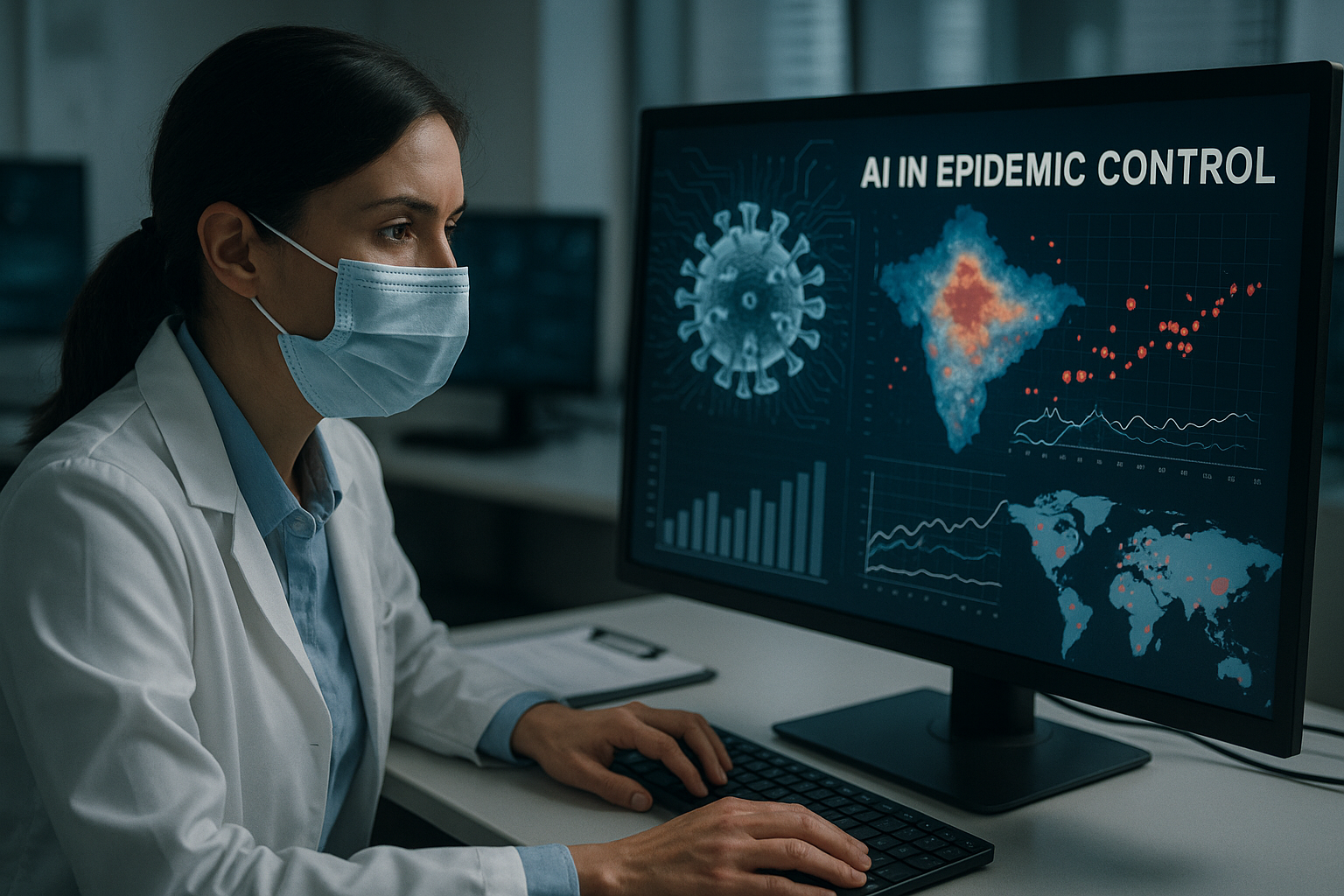
AI in Epidemic Control: How India is Strengthening Public Health with Technology
- admin
- July 8, 2025
- Government, Tech & Innovation
- 0 Comments
Key Highlights:
- The Indian government is deploying Artificial Intelligence (AI) to enhance epidemic tracking and management.
- Initiatives like the Integrated Health Information Platform (IHIP) and Aarogya Setu app are redefining public health surveillance.
- Partnerships with organizations like Wadhwani AI and IITs are driving innovation in AI-driven epidemic management.
Fighting Epidemics with AI: India’s Response
India’s vast and diverse population has made it imperative for the government to adopt advanced technologies to combat epidemics. With the increasing frequency of disease outbreaks, the integration of Artificial Intelligence (AI) into public health systems has proven transformative. From early detection to resource allocation and public awareness, AI is reshaping how the Indian government tracks, manages, and mitigates the impact of epidemics.
Key AI-Driven Government Initiatives
Integrated Health Information Platform (IHIP)
The Ministry of Health and Family Welfare launched IHIP as India’s first real-time disease surveillance system. Powered by AI, the platform collects and analyzes data from healthcare facilities across the country, enabling authorities to identify potential outbreaks and act swiftly.
- IHIP processes reports on 33 epidemic-prone diseases, such as dengue and cholera, ensuring timely responses.
- AI tools help visualize data trends, offering actionable insights for policymakers.
Aarogya Setu Mobile Application
Introduced during the COVID-19 pandemic, the Aarogya Setu app became a critical tool for contact tracing and risk assessment. Using AI, the app:
- Monitored interactions via Bluetooth and GPS to alert users about potential exposure to the virus.
- Disseminated verified information, helping to combat misinformation.
- Assisted in monitoring quarantine adherence and streamlining testing resources.
AI in Tuberculosis Eradication
Under the National Tuberculosis Elimination Program (NTEP), AI is being used to screen X-rays and identify early signs of tuberculosis. AI tools like qXR by Qure.ai have enhanced diagnostic accuracy, especially in rural and underserved regions.
AI-Powered Surveillance with Wadhwani AI
Wadhwani AI, in partnership with state governments, developed AI solutions to monitor and predict outbreaks of diseases like malaria and dengue. By analyzing climate data, mosquito breeding patterns, and reported cases, these tools provide real-time insights for targeted interventions.
Real-World Applications of AI in Epidemic Management
- Early Detection and Prediction:
AI algorithms analyze health data and environmental factors to predict outbreaks, allowing preventive measures to be implemented proactively. - Resource Allocation:
AI models identify regions at higher risk, ensuring medical supplies, vaccines, and healthcare workers are deployed effectively. - Public Awareness:
AI-powered chatbots provide real-time health guidance, combat misinformation, and educate citizens about preventive measures. - Monitoring Health Trends:
AI systems track patterns in hospital admissions and healthcare queries to identify emerging health threats, even before they escalate.
Collaborative Efforts Driving AI Integration
The success of AI in epidemic management is amplified by collaborations with public and private entities. Partnerships with IITs, NASSCOM, and global health organizations have facilitated the development of advanced AI models tailored to India’s public health needs. For instance:
- WHO Collaboration: The World Health Organization supports India’s AI-driven disease surveillance programs, ensuring global standards.
- Private Sector Contributions: Startups like Qure.ai and organizations like Wadhwani AI bring innovative solutions that enhance the government’s epidemic response.
Challenges and the Way Forward
While AI has transformed epidemic management in India, challenges remain:
- Data Privacy Concerns: Protecting sensitive health data is crucial to maintaining public trust.
- Infrastructure Gaps: Rural areas often lack the digital infrastructure needed for AI tools to function effectively.
- Skill Development: Training healthcare workers and public health officials in AI technologies is essential for their effective use.
The government is addressing these challenges through initiatives like BharatNet for rural connectivity, the Digital India program for capacity building, and the proposed Data Protection Bill to safeguard privacy.
A Healthier Tomorrow
India’s integration of AI into epidemic management marks a significant leap in public health strategy. These innovations are not just tools for combating diseases but also symbols of a forward-thinking approach to governance. By leveraging AI, the Indian government is building a resilient health system capable of protecting its citizens and ensuring a healthier, safer future.

